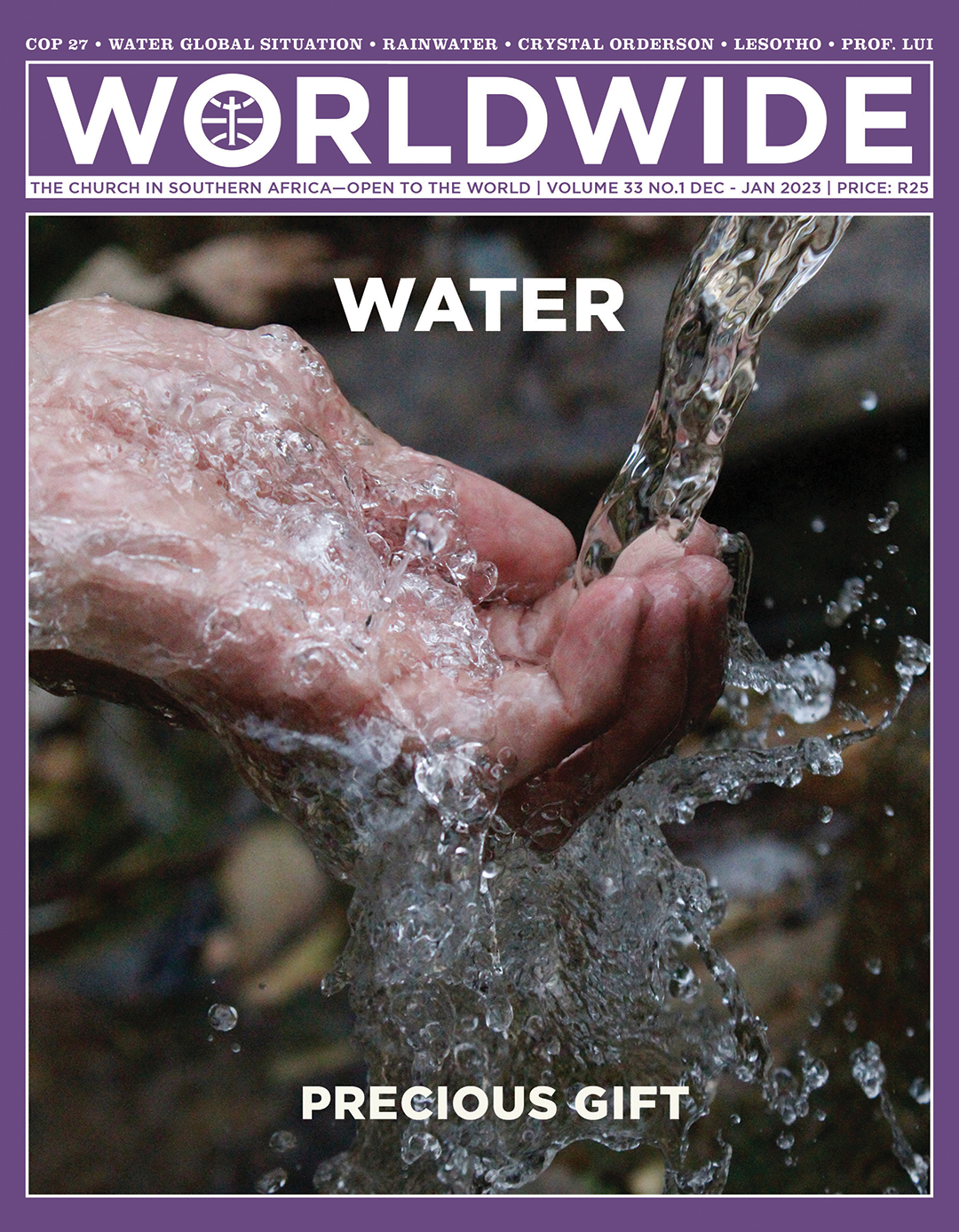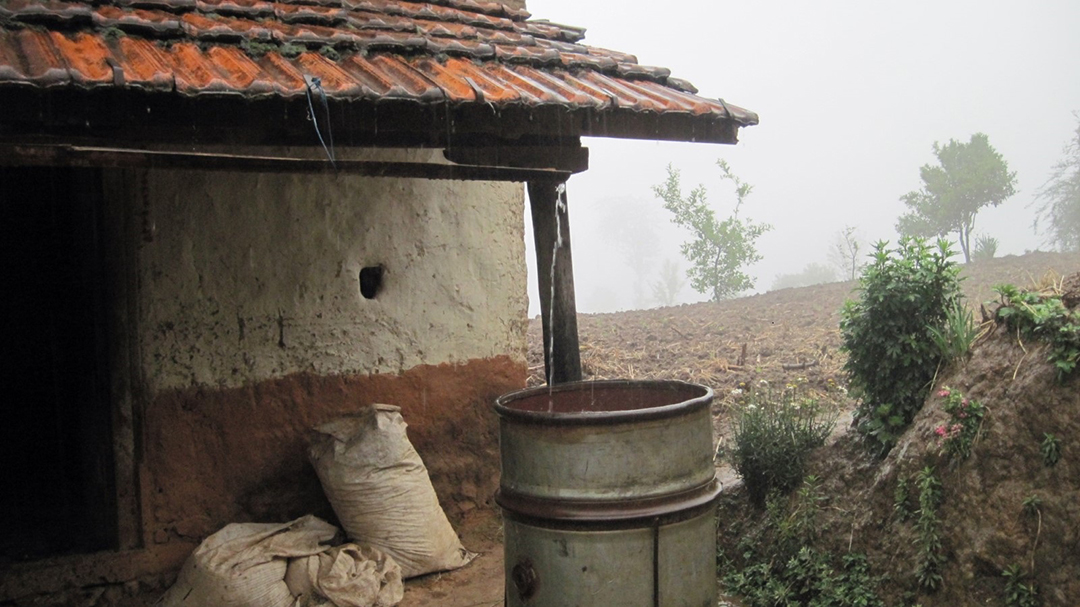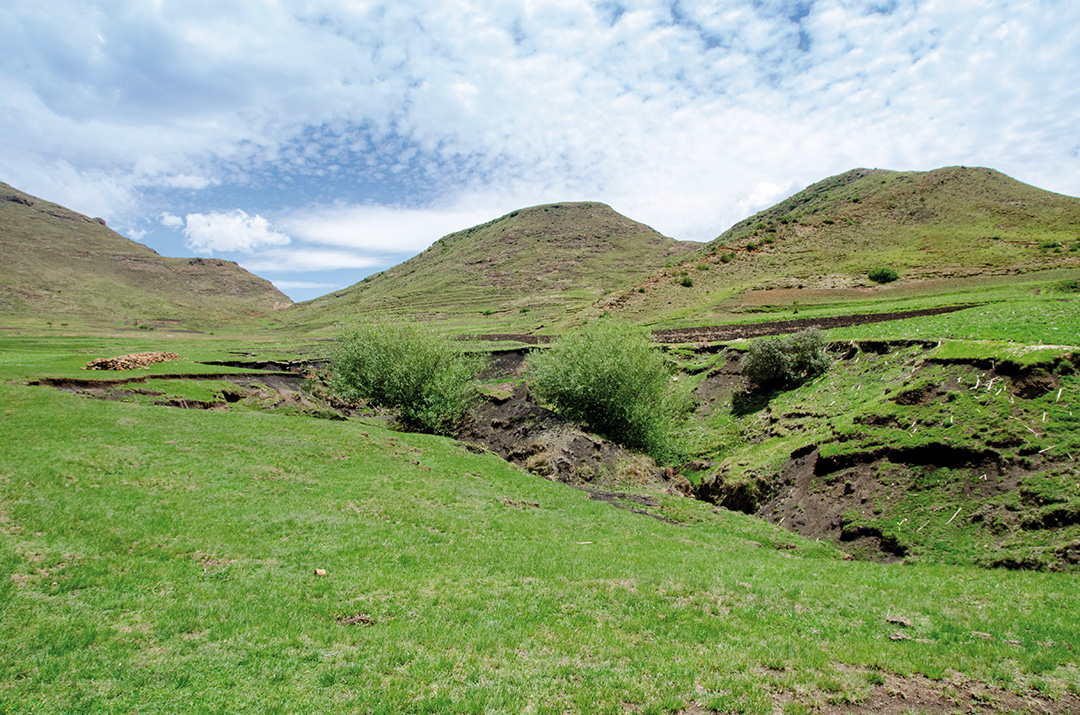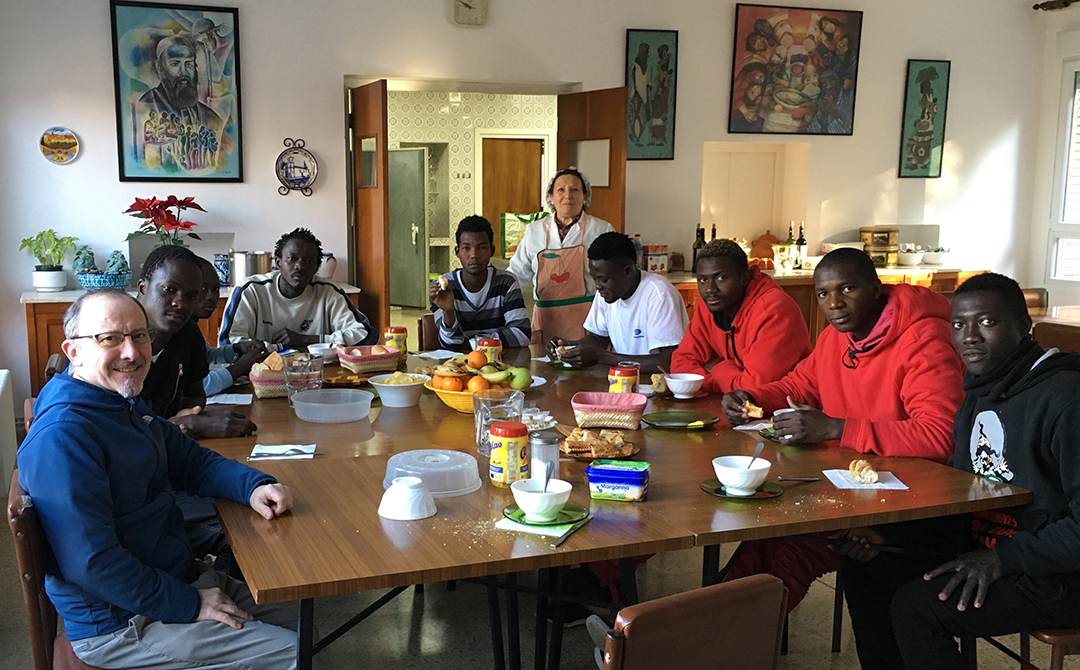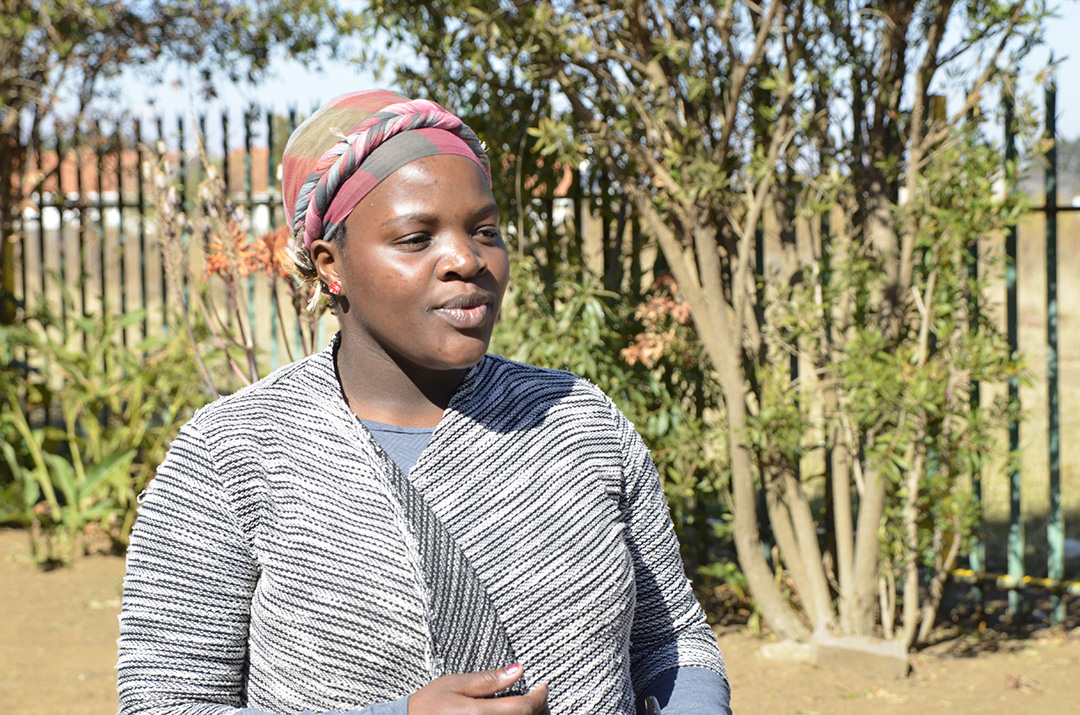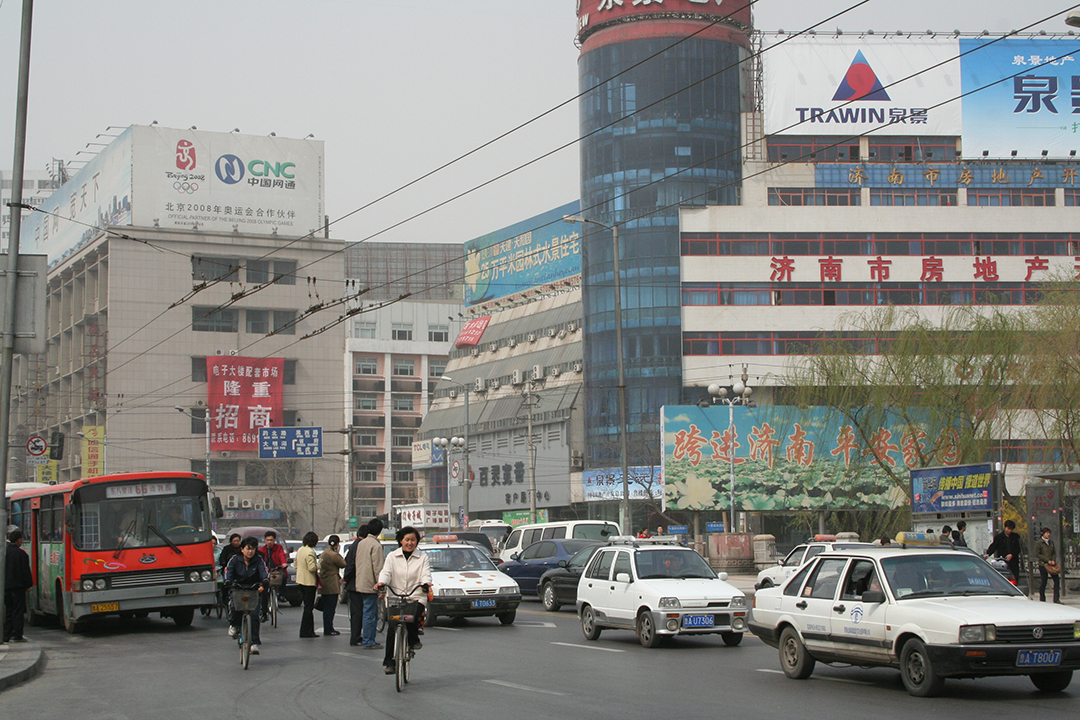SPECIAL REPORT • ETHIOPIA
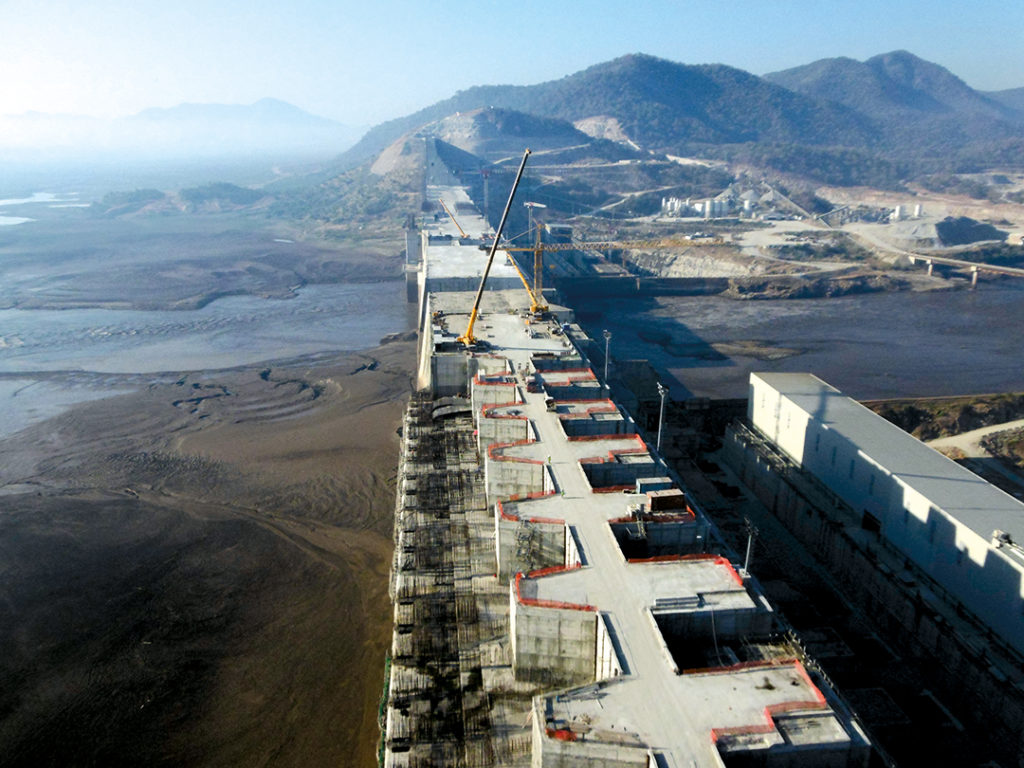
The Grand Ethiopian Renaissance Dam
The construction of the Grand Ethiopian Renaissance Dam (GERD) in the Blue Nile, planned to be completed in 2015, has taken much longer than expected. As it now takes definite shape, Ethiopia, Sudan and Egypt are arguing over the future of waters on which millions of fishermen and farmers depend
BY Fr Juan González Núñez, MCCJ | Ethiopia
The dam’s identity card
Work on the Blue Nile Dam, the Grand Ethiopian Renaissance Dam, as it came to be called after its initial name of the Millennium Dam, began in 2010 and was kept secret until 2 April 2011, when the then prime minister, Meles Zenawi, laid the first stone. From that moment on, the dam took centre stage in the life of the nation. Meles wanted to make it an icon, defining it with such emphatic phrases as “the monument that this generation is making for herself” or “the work that will lift Ethiopia out of poverty”.
Certainly, the project from its conception was colossal. Destined to be the largest dam in Africa, 155 m high at its deepest point and 1 874 m long. The amount of power produced, estimated at 5 600 megawatts at the time, would be more than double what all the other dams in the nation produced. It could be said to be a huge progression, both in terms of remedying the nation’s chronic electricity shortage and revenue from selling the surplus power to countries such as Kenya, Djibouti, Sudan and even Egypt.
On 30 March 2011, a contract for $4.8 billion dollars was signed between the prime minister and the company Salini Costruttori to carry out the works. Since there was no support from the international community for this construction project, the Ethiopian government decided to bear the full cost of it—rather the Ethiopian government and its people, since all mechanisms were immediately set in motion to dig into the pockets of the citizens, from investments in the form of government bonds to deductions from public employees’ salaries, the percentage subtracted from mobile phone usage, public events designed to force the ‘generosity’ of the participants. If it was the future good of the nation that was at stake, how could sacrifices not be asked for?
Egypt’s opposition
By its mere location on the Nile, the dam was bound to be controversial, because the downstream nations, Sudan and Egypt considered that its waters should be untouchable. The Nile is the only freshwater source for Egypt. The last treaty, the Nile Water Agreement of 1959, was signed by Sudan and Egypt, as sole signatories, giving the two countries full control in the utilization of the Nile waters. Egypt would have 55.5 million cubic metres and Sudan, 18.5 million cubic metres. No reference to the other countries of the great Nile River basin was made. In 1999, the other nine riparian countries launched the Nile Basin Initiative. Egypt did not support this initiative as it was seen as a threat to its water supply.
Egypt’s objections to the GERD began as soon as it heard about the project and became recurrent over the years, sometimes mild, sometimes as explosive as President Mohamed Morsi’s claim that ‘all options were open’, which in the context was understood to include an armed attack. Less forceful ones included helping dissident groups taking refuge in Eritrea, and international smear campaigns. Their limited success in these initiatives meant that in the beginning, Sudan sided more with Ethiopia than with Egypt, though now its current position is more favourable to Egypt. As a matter of fact, in October 2019, Egypt asked to resume the talks that had broken down in April of that year. Sudan and Ethiopia were not in favour of sitting down for talks again; they accused Egypt of derailing the spring talks. It is understood, by some analysts, that Egypt’s concern is not only about their share of water, but also about political dominance in the region and the government is aware that the GERD project is a game changer in many ways.
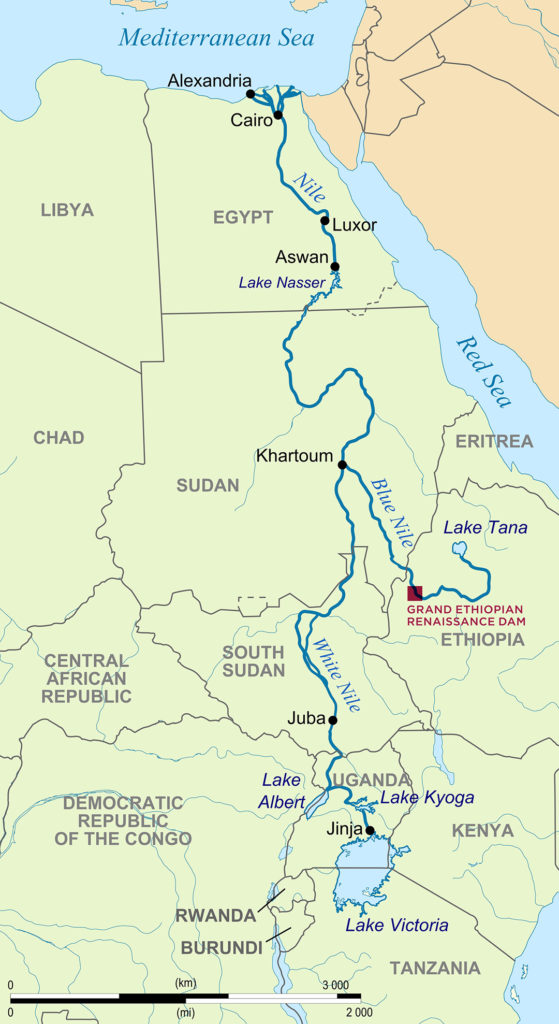
As it is hardly tenable that Ethiopia has no right to build the dam, Egypt’s objections have focused on the negative impact it will have on their country, particularly during the filling period, when the water flow will necessarily be reduced. How long can this filling period take? The latest proposal from Egypt, after a gradual reduction, puts the period at seven years with some conditions on the amount of water to be retained, a proposal that Ethiopia rejects. Addis Ababa insists that the impact of the dam on Egypt is more positive than negative, as it will help regulate water flow and reduce evaporation.
To the sound of Egyptian war trumpets, Ethiopia responded by placing anti-aircraft devices in the mountains surrounding the dam. It all looks like a staged event, as an armed attack is more than improbable, is almost unthinkable, given the international repercussions it would have, not to mention the very serious damage to the two nations directly involved.
The Metals and Engineering Corporation (METEC) crisis
Far less dramatic—but far more damaging in terms of lost time and money than the dispute with Egypt—was the crisis created by METEC, a conglomerate of companies controlled by the Ministry of Defence in the shadow of the Tigray People’s Liberation Front (TPLF). METEC was set up in 2010 and grew disproportionately during the period before Abiy Ahmed came to power. It manufactured both military equipment and other products for civilian use—transformers, solar panels, etc. The government entrusted it with macro-projects such as sugar plantations and factories, but also with the electrical installations of the GERD, including the acquisition of the turbines, the key to the whole project. With Abiy’s rise to power and the fall of the TPLF in April 2018, the heads of METEC were immediately called to account, raising suspicions that METEC was more of a front for capital evasion by the ruling military class than a competent company. None of the major projects had been carried out, while the money had vanished.
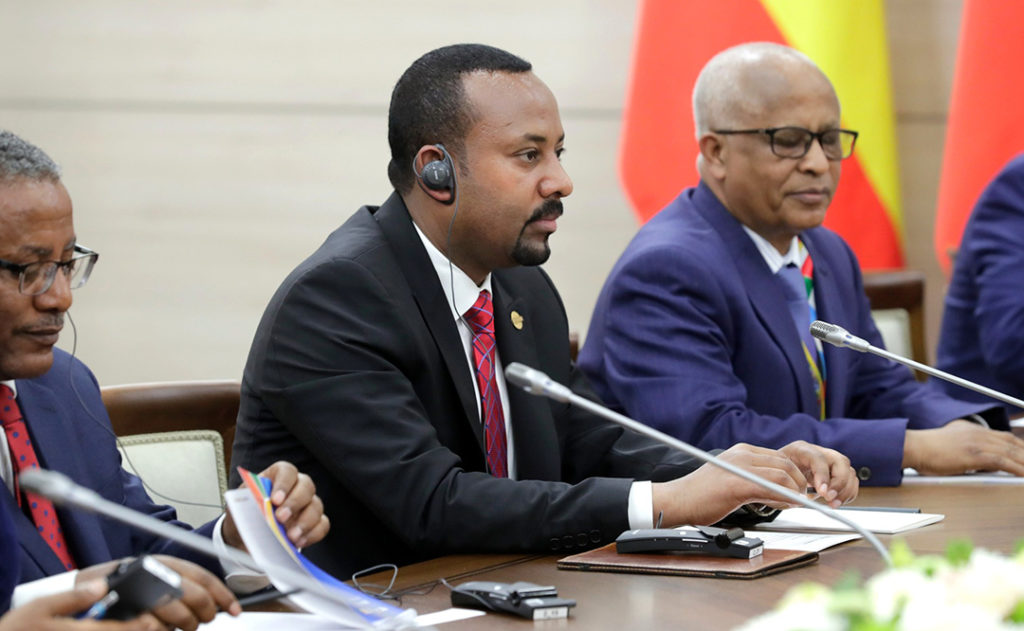
In August 2018, following the death in bizarre circumstances of the dam project’s chief engineer, Simegnew Bekele, Abiy’s government cancelled the dam contract with METEC. Abiy commented: “The complex dam project was entrusted to people who had never seen a dam in their lives, and if we continue on this path, the project will never see the light of day.” Months later, Brigadier General Kinfe Dagnew, the former CEO of METEC, was arrested along with 40 other senior METEC officials. Kinfe was arrested at the Sudanese border while trying to escape. These happenings caused a long delay in the works, waiting for turbines and other equipment that were paid for but never arrived.
Present and future
The five years of construction planned at the beginning turned into twelve, and there could be a few more years needed to complete the project. The task entrusted to METEC, which led to the disruption of the project, was then placed into the hands of a Chinese company. Beyond the technical side, Chinese banks have financed the new turbines and all the electrical equipment, which amounts to a third of the entire cost of the dam.
The most beautiful thing about the dam is the turbines. Initially, it was planned to install 15 turbines of 350 megawatts each. In 2017, it was decided to install 16; 14 of 400 megawatts and 2 of 375 megawatts. In total, the estimated output is 6 350 megawatts.
The lake created will have a surface area of 1 874 km2, roughly half the size of Lake Tana, Ethiopia’s largest lake. It will hold 74 m3 of water, three times the depth of Lake Tana which is only 15 m deep, compared to the 140 m of the GERD on the Nile.
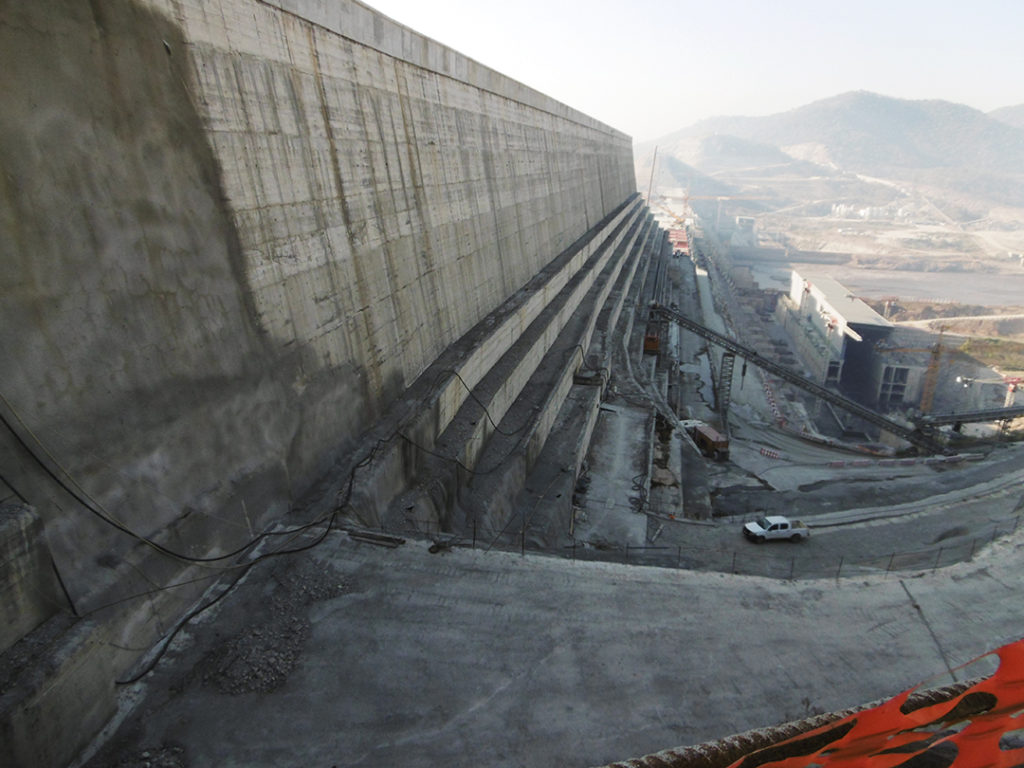
The relocation of the inhabitants of the area flooded by the new lake, less than 20 000, took place, in most instances, without major difficulties. For people who live on subsistence agriculture and whose houses are built in a couple of days, relocation is a common practice. Given the abundant availability of land, the land that has been offered to the displaced is likely to be better, giving them better access to schooling, water and electricity.
Egypt and Sudan remain concerned about their share of water from the Nile
On 12 August 2022, the Prime minister of Ethiopia announced the completion of the third filling of the dam. The first was done in July 2020. Heavy rains in 2020 contributed to the early filling of the dam. Egypt and Sudan remain concerned about their share of water from the Nile. Egypt preferred that Ethiopia would defer the filling of the dam until a tripartite, binding and comprehensive agreement had been signed. Egypt applied to the UN Security Council, with concerns regarding its share in its only source of fresh water, the Nile. According to Ethiopia, the filling of the dam, if done during the rainy season, doesn’t reduce the amount of water that flows to Egypt and Sudan, but rather it controls the floods that affect Sudan badly. Currently, the negotiations between the three countries are at a standstill.
For a nation with a high percentage of its people without access to electricity, and chronic power cuts where access exists, GERD is undoubtedly a leap forward that allows Ethiopia to “leave poverty behind”, as Prime Minister Meles Zenawi said at its inauguration, and as the current Prime Minister Abiy Ahmed and with him, an entire nation that wants to walk firmly on the path of progress, continues to say.

